Performance art: a new Alexander Calder retrospective opens at Tate Modern
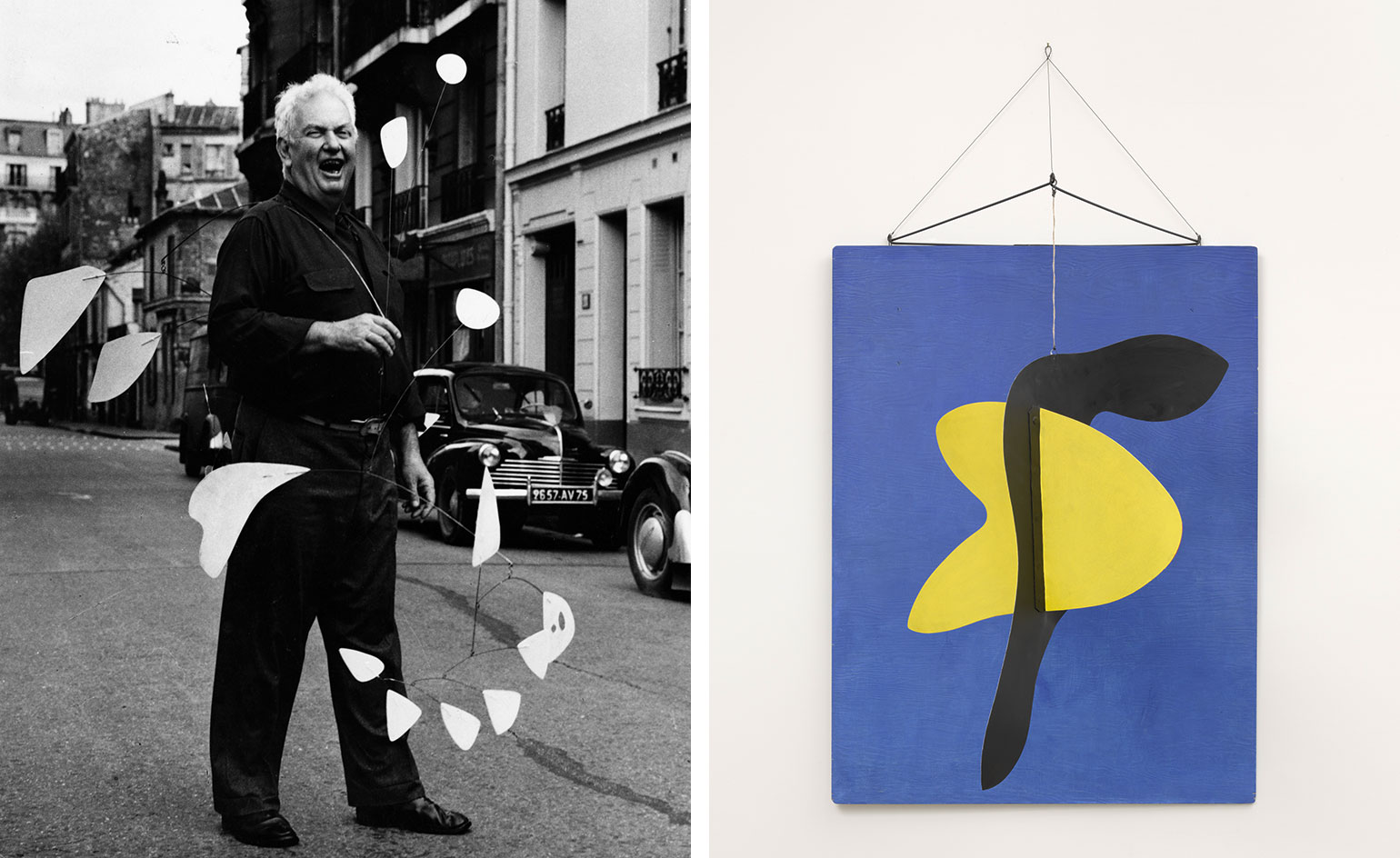
As Achim Borchardt-Hume, director of exhibitions at Tate Modern, points out, an Alexander Calder mobile has long been an almost essential fitting for the modernist dream home; in renders as much as the realised, where they are instantly recognisable, and bring colour and movement to hypothetically elegant, airy spaces. Architects love Calder as he loved them (he knew all the important ones) because he created wonderful objects that move in space and make spaces feel more wonderful. (His mobiles are also as much about what isn’t there – their transparency and fluttering lightness – which also appeals to modernist architects.)
Of course, its not just architects. Everyone loves a Calder. The Calder mobile is the friendly, accessible, unpretentious and playful face of modernism. There is nothing difficult about a Calder. And, as happens, Calder’s reputation has suffered from this warm over familiarity.
'Alexander Calder: Performing Sculpture', a new show at Tate Modern and the largest ever UK show of Calder’s works, reminds us how serious Calder was about his art. And how, as it evolved over time, much Calder removed to get what he wanted.
Sandy Rower, Calder’s grandson and president of the Calder Foundation, was in London for the opening of the show – and was quick to point out that this wasn’t a simple retrospective. The show starts with Calder’s early output from his time in 1920s Paris and finishes with works from the early 1950s. Calder carried on working, and at a good pace, for almost three decades, during which his work got bigger and more ambitious (the Tate Modern show doesn’t include any of the more monumental stabiles that architects loved to put in their modernist plazas). But it was in these three decades that Calder got the essentials right.
The show begins with his wire sculptures, clever 3-D sketches including one of Josephine Baker and others of the circus performers and acrobats who were a continuing fascination to the artist.
By the 1930s, and following a career-changing visit to the studio of Piet Mondrian – 'it was like a baby being slapped to make its lungs stop working,' Calder said – he had moved on to mechanised ‘mobiles’, a term coined by his friend Marcel Duchamp. (When A Universe, amongst the best known of these motorised pieces, was first exhibited at MoMA, Einstein apparently spent forty minutes watching it complete its full cycle of movements).
Later in the decade he would lose the motors and relay on precise balance and air flow to create movement. These fluid abstracts, constantly shifting and ‘performing’, were a radical break from the past, taking sculpture to entirely new places – Calder was from a long line of figurative sculptures so he knew where he was heading away from. These pieces – Morning Star, Constellation, Vertical Foliage, Gamma, Snow Flurry are all on show – are cosmic systems or natural events. 'The idea of detached bodies floating in space, of different sizes and densities, some at rest, while others move in particular manners, seems to me the ideal source of form,' Calder said.
The show ends with Black Widow, a 3.5m mobile donated to the Institute of Architects of Brazil in São Paulo in 1948, while Calder was travelling and exhibiting in Brazil.
Calder’s influence on young Brazilian artists of the time, such as Lygia Clark and Hélio Oiticica, is obvious. And Calder remains an influence. Witness Sarah Sze’s marvelous mobiles, shown at Victoria Miro this year. Sze is just one the artists to enjoy a residency at the Atelier Calder, built by Calder near Saché in France in 1962. Run by Rower and the Calder Foundation. It offers artists the chance to work in what was Calder’s huge, light-filled studio, live in the Calder residence and enjoy the views across the Loire Valley.
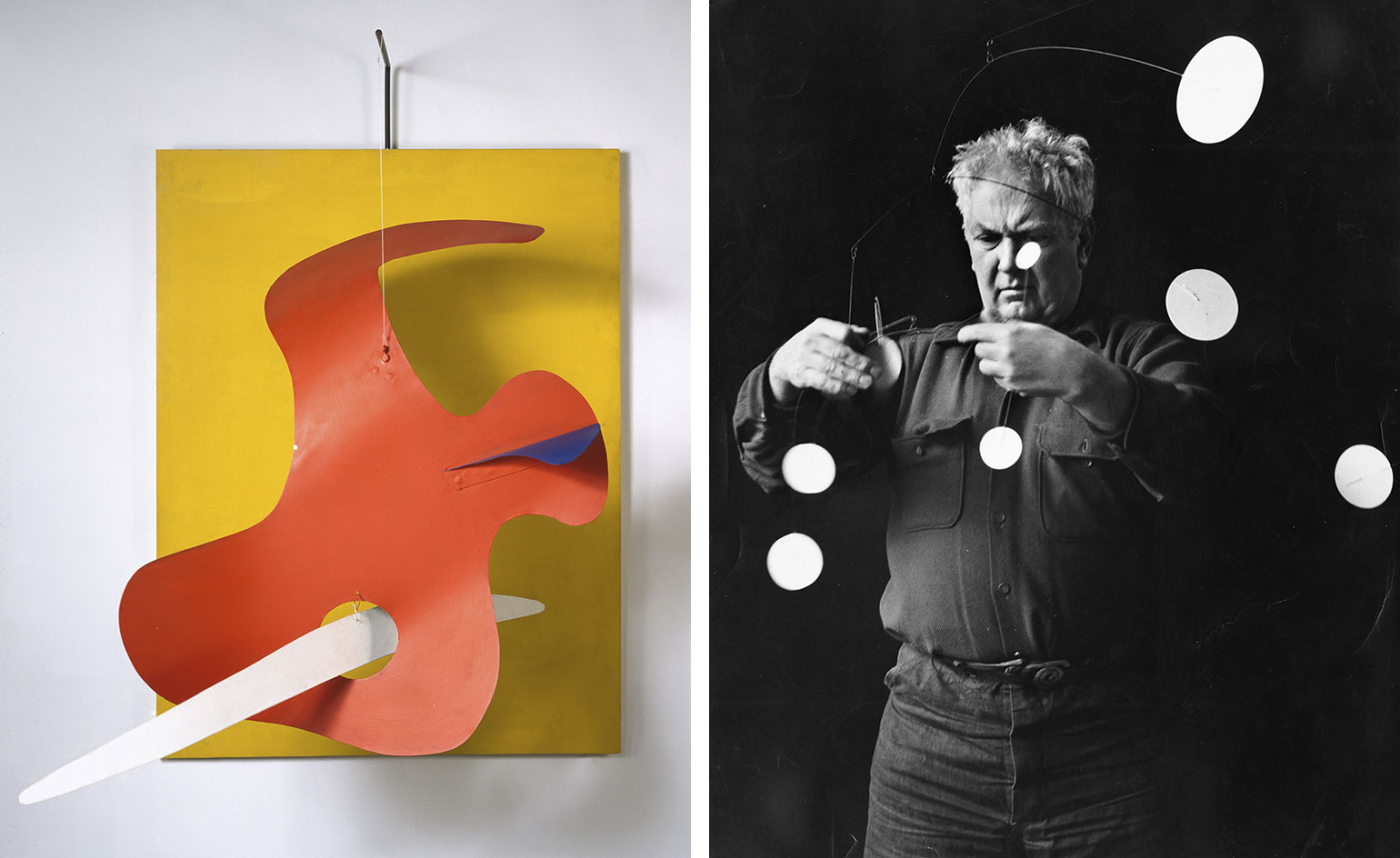
The show is titled ’Alexander Calder: Performing Sculpture’ and is the largest ever UK show of Calder’s works. Left: Form Against Yellow (Yellow Panel), 1936. Right: Alexander Calder with Snow Flurry I (1948), 1952.
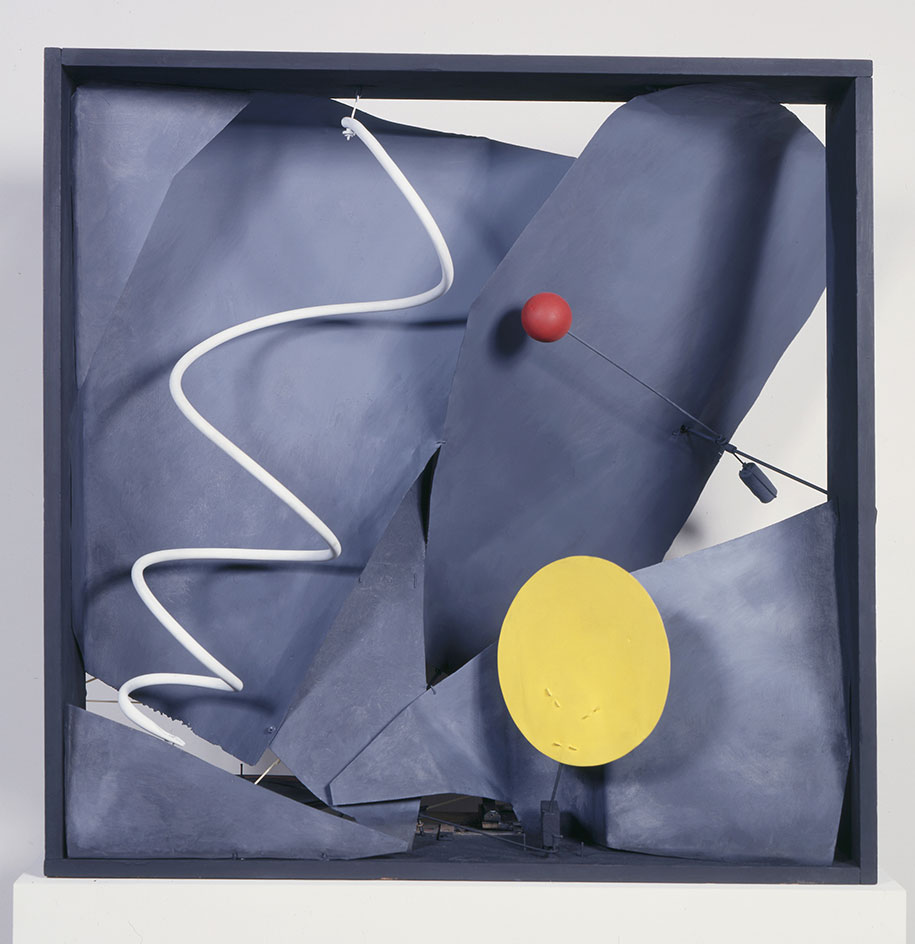
The show starts with Calder’s early output from his time in 1920s Paris and finishes with works from the early 1950s. Pictured: Black Frame, 1934.
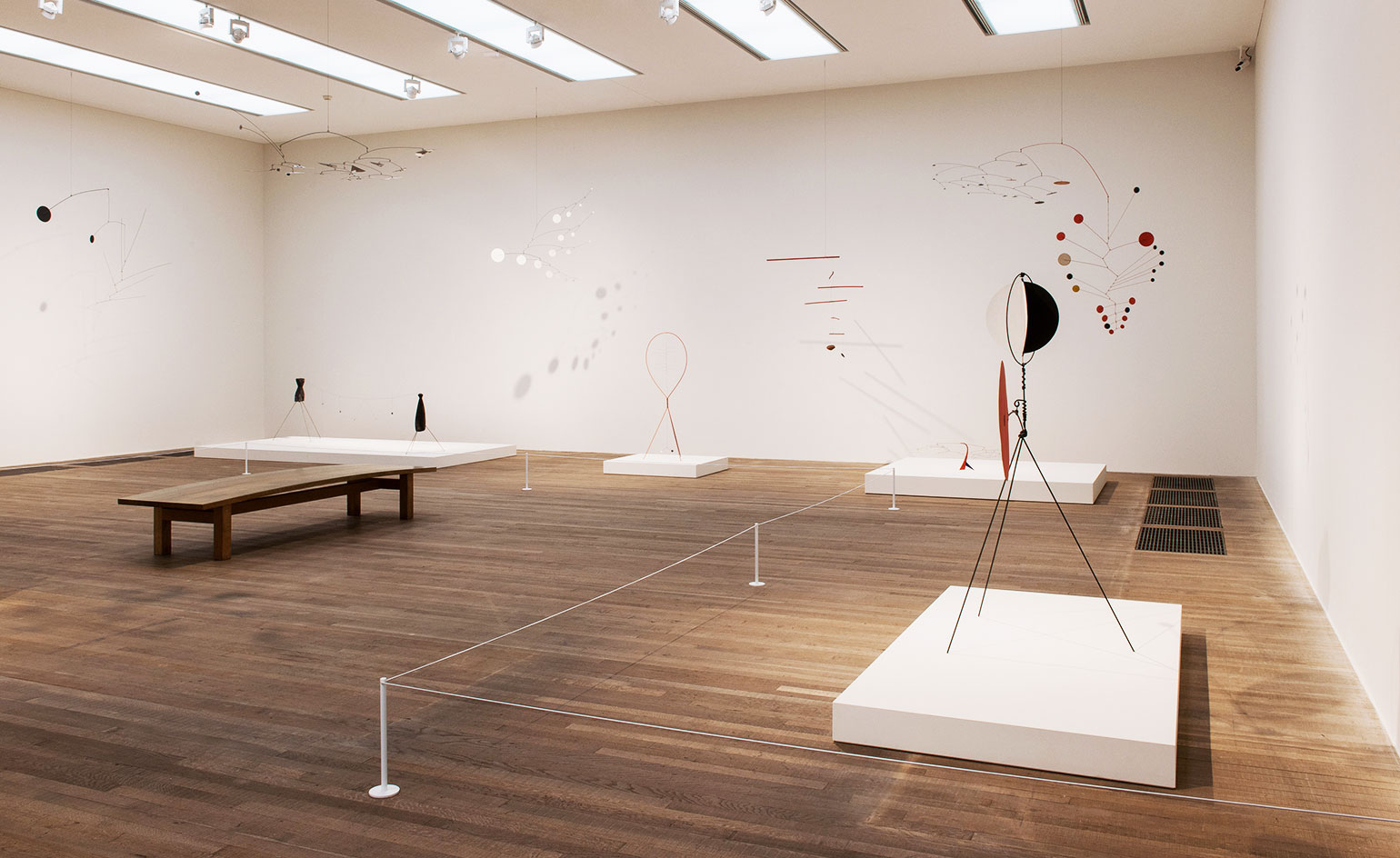
Installation shot of Calder’s mobiles and stabiles Courtesy: Calder Foundation, New York / DACS, London
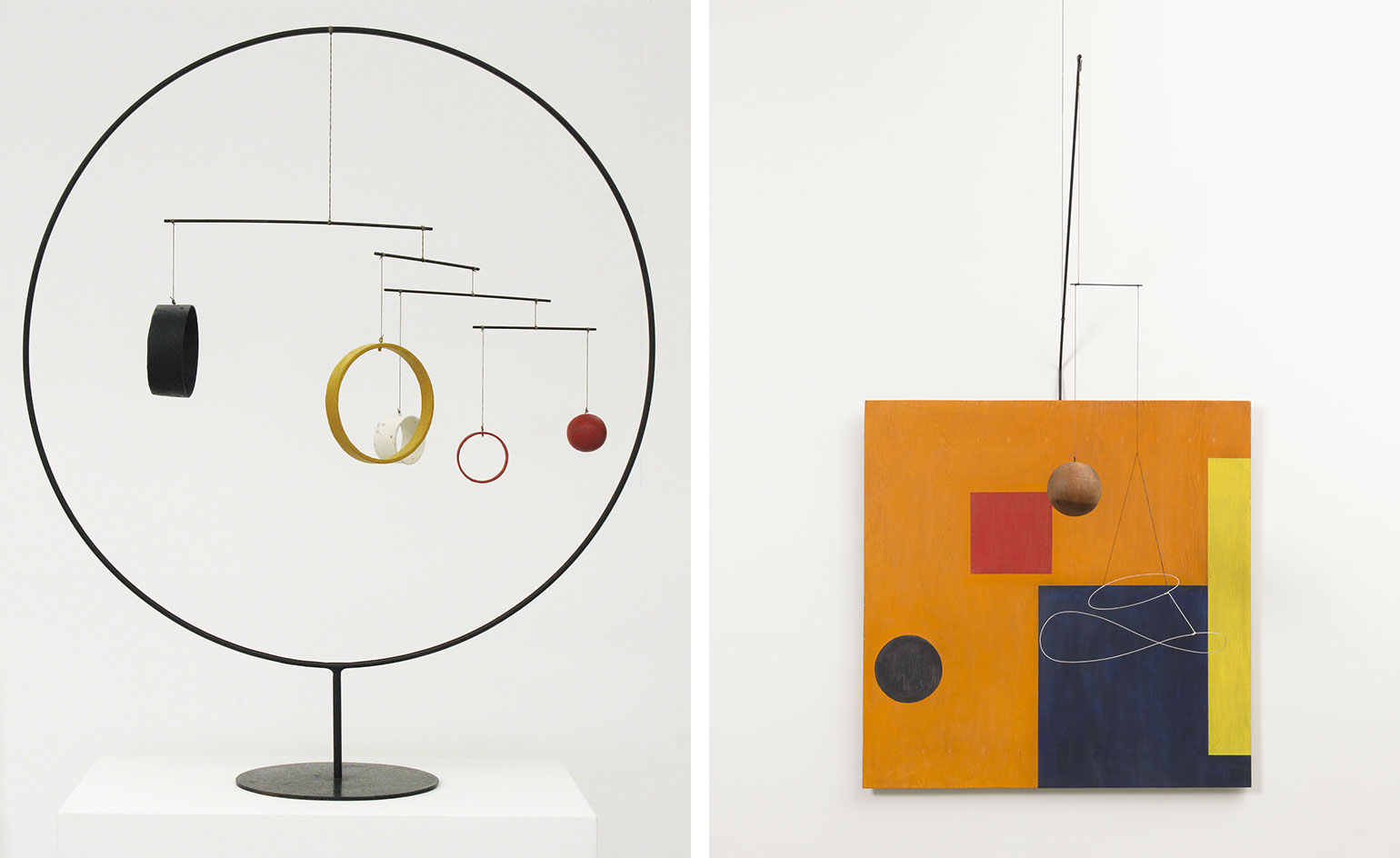
Left: Untitled, c.1934. Right: Untitled, c.1937.
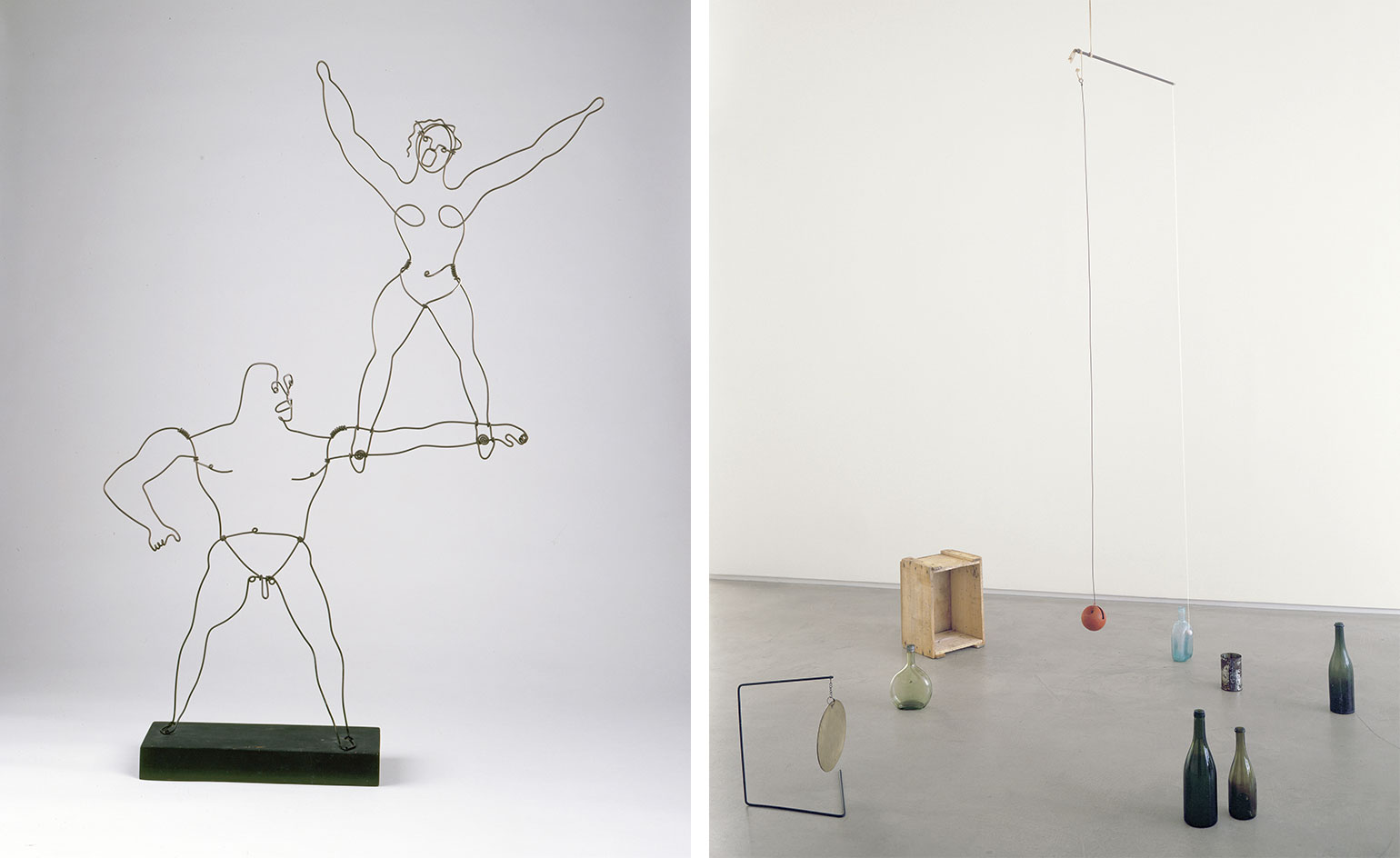
The show begins with his wire sculptures, clever 3-D sketches including one of Josephine Baker and others of the circus performers and acrobats who were a continuing fascination to the artist. Pictured left: Two Acrobats, 1929. Courtesy Menil Collection. Right: Small Sphere and Heavy Sphere, 1932–33.
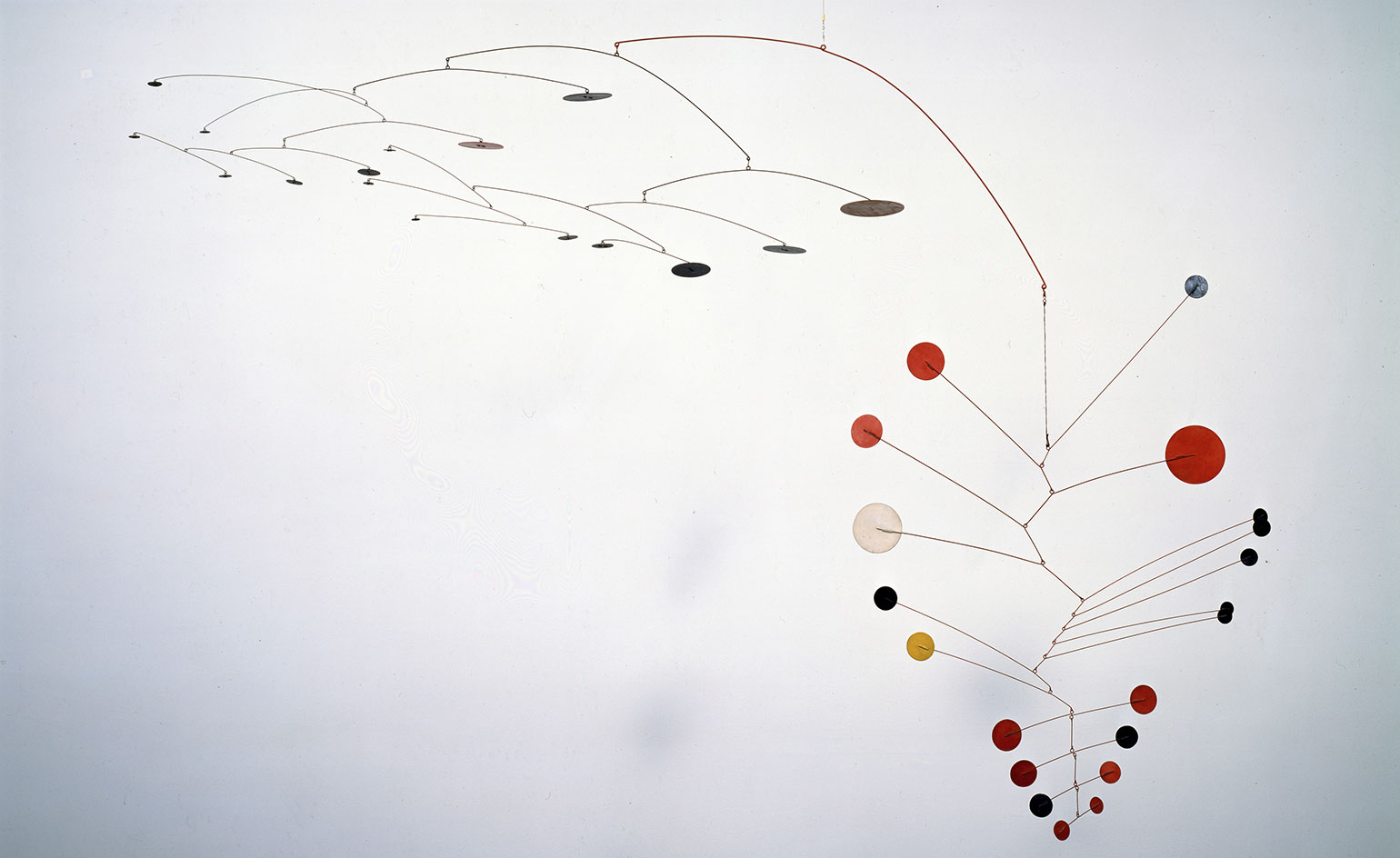
Everyone loves a Calder. The Calder mobile is the friendly, accessible, unpretentious and playful face of modernism. Pictured: Gamma, 1947.
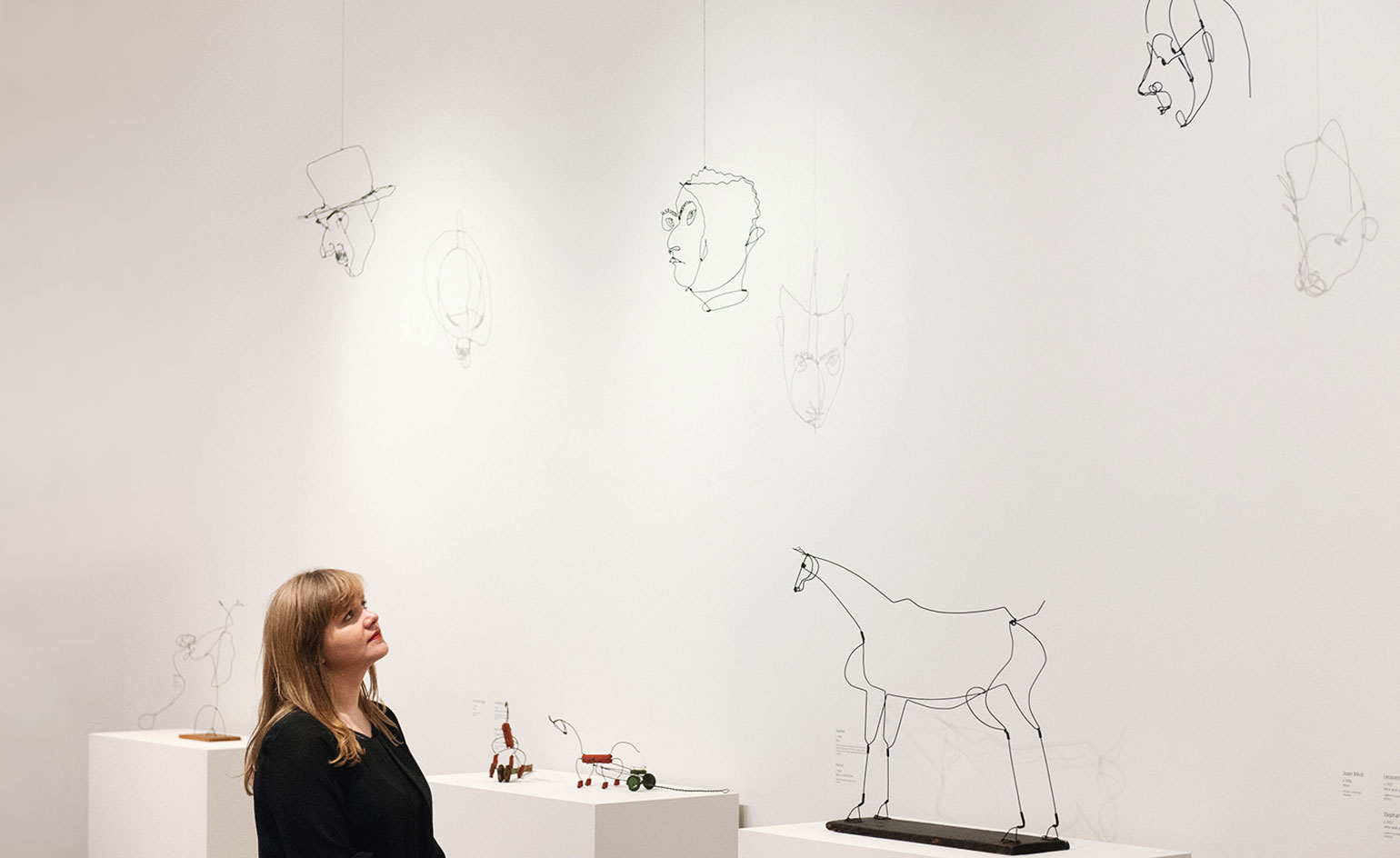
Installation shots of Calder’s wire portraits (Joan Miró, 1929, Fernand Léger, 1930, and Varése, c.1930). Courtesy: Calder Foundation, New York / DACS, London
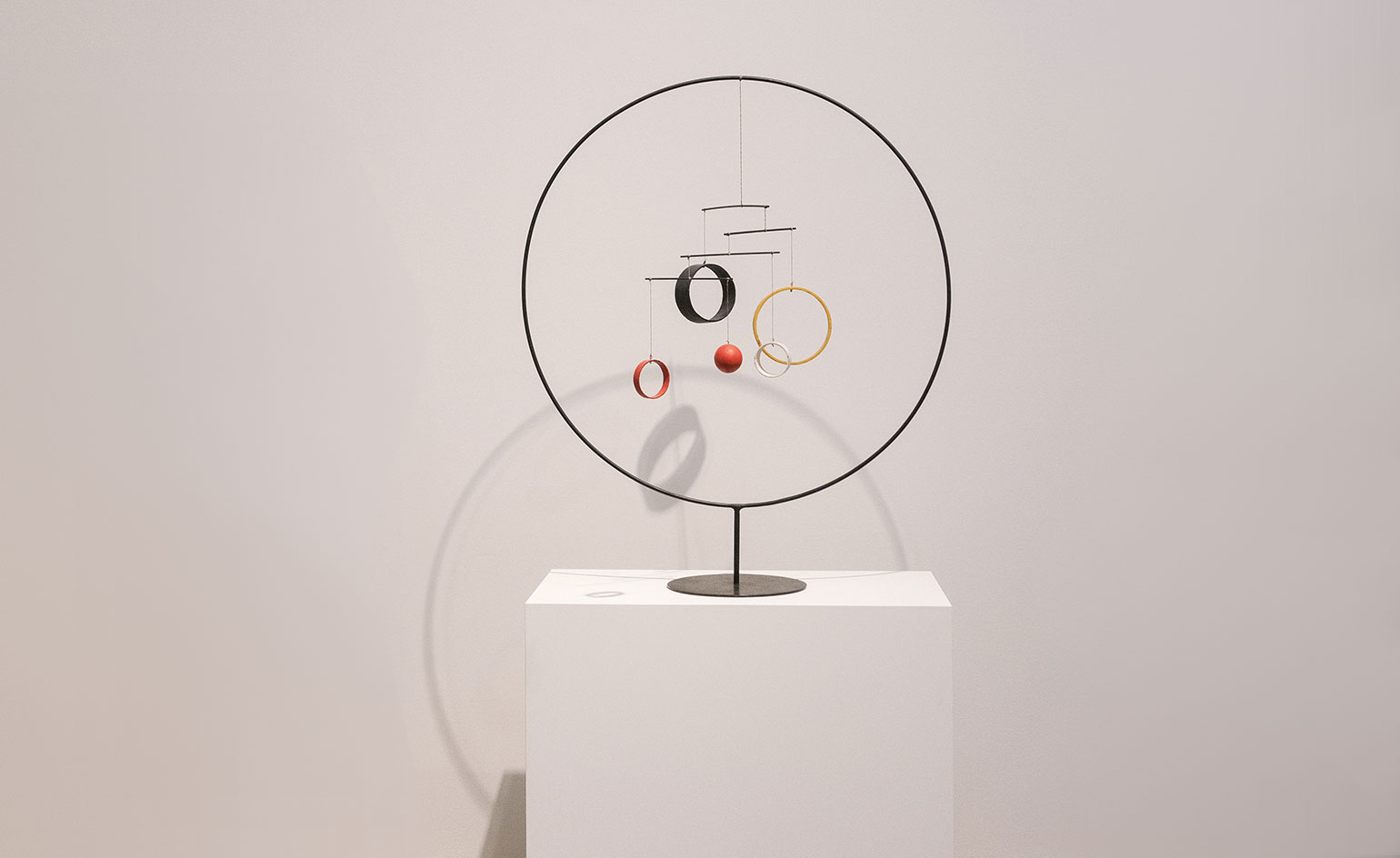
Installation shot of Untitled, c.1934 Courtesy: Calder Foundation, New York / DACS, London
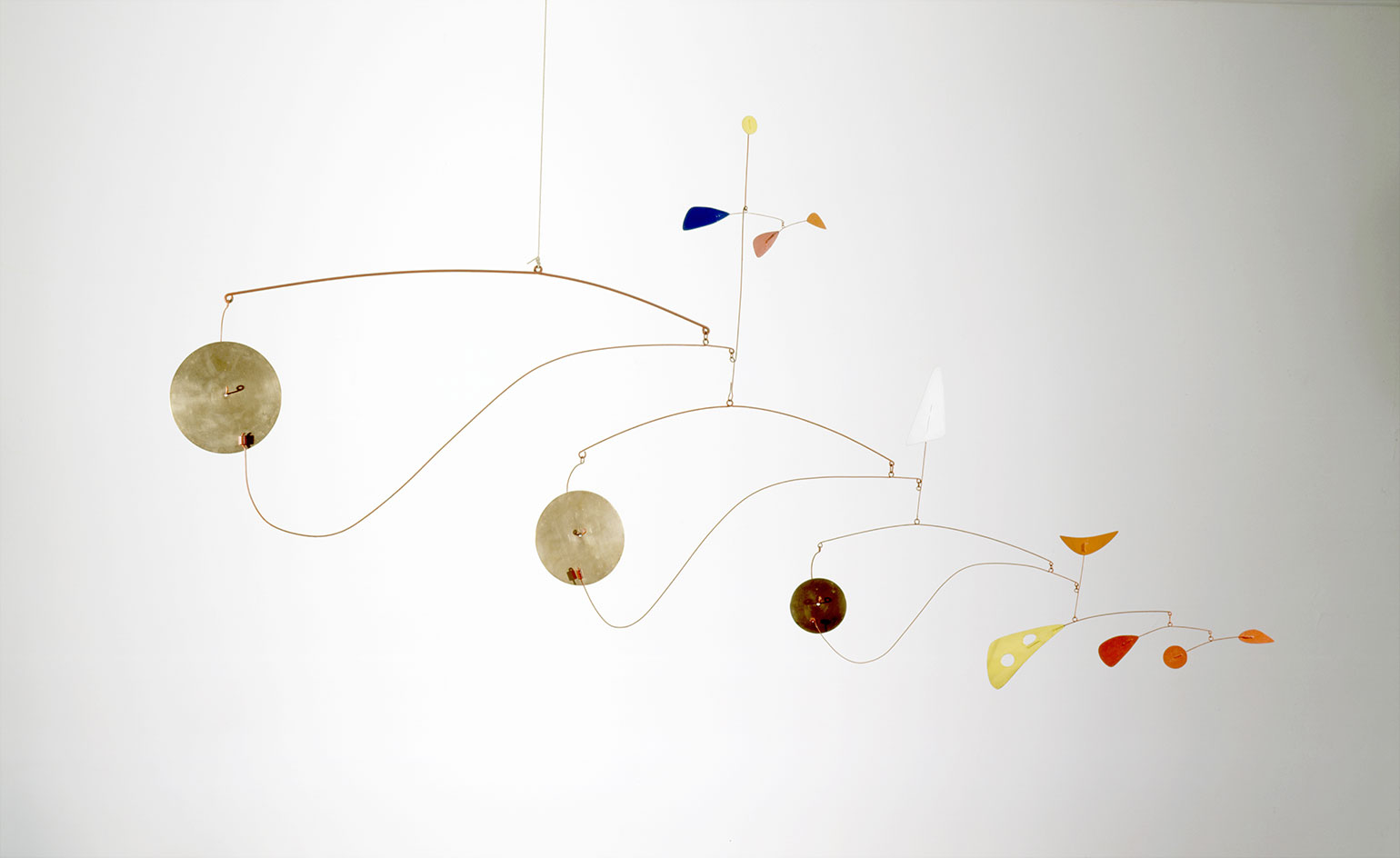
Later in his career, Calder would relay on precise balance and air flow to create movement. Pictured: Triple Gong, c.1948.
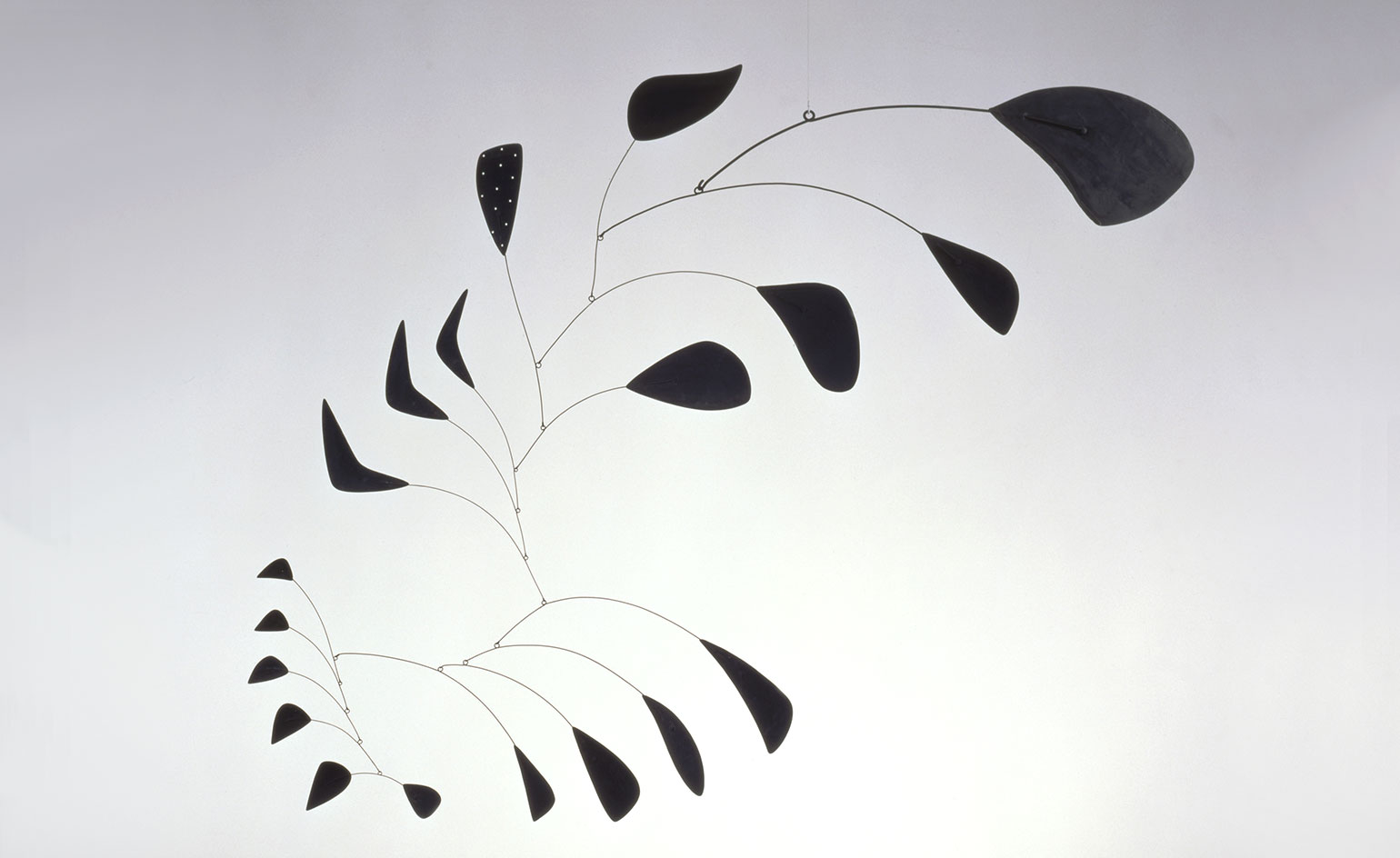
Vertical Foliage, 1941.
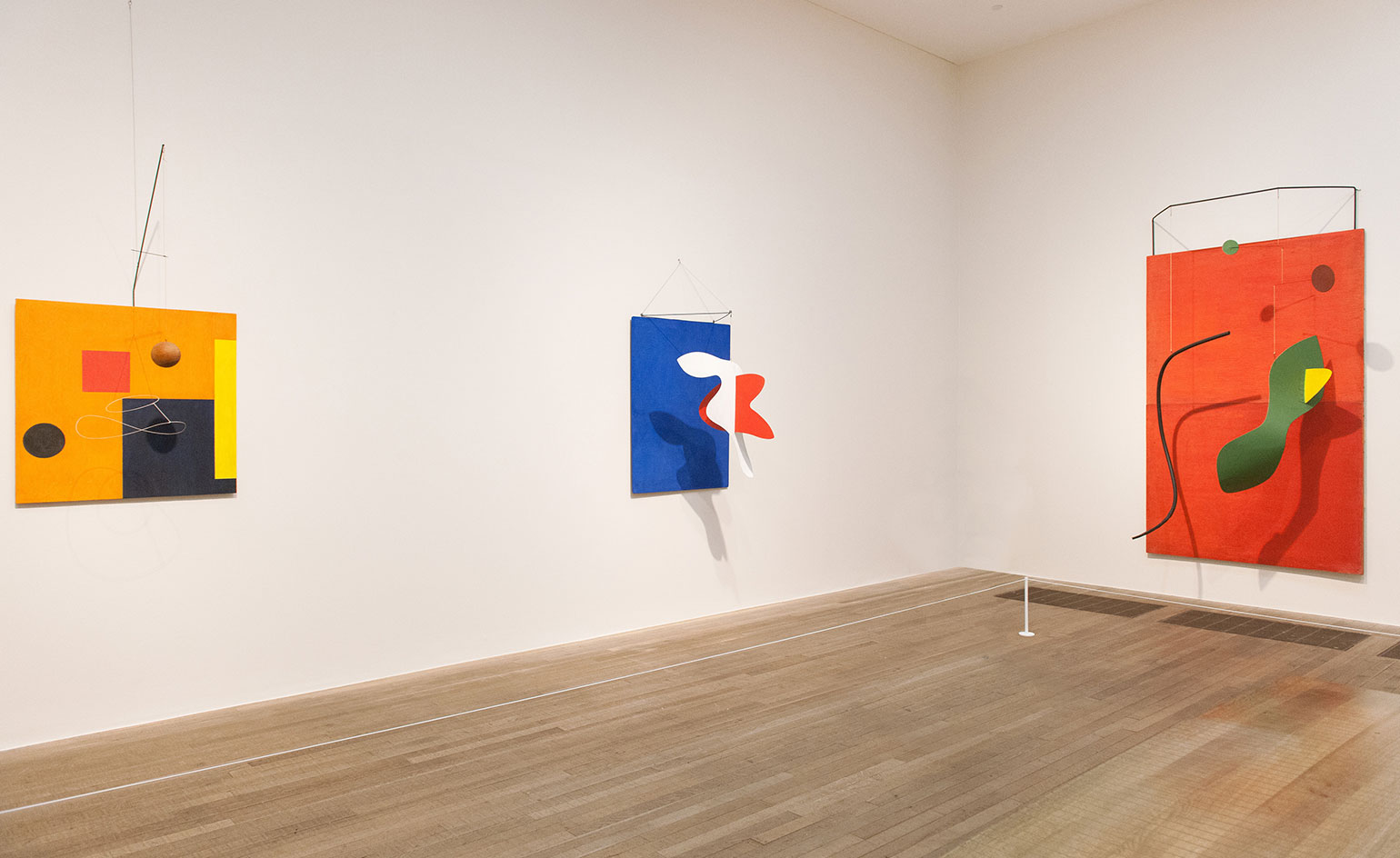
Installation shot of Calder’s panel works, which have been reunited for the first time (pictured here is Blue Panel, 1936) Courtesy: Calder Foundation, New York / DACS, London
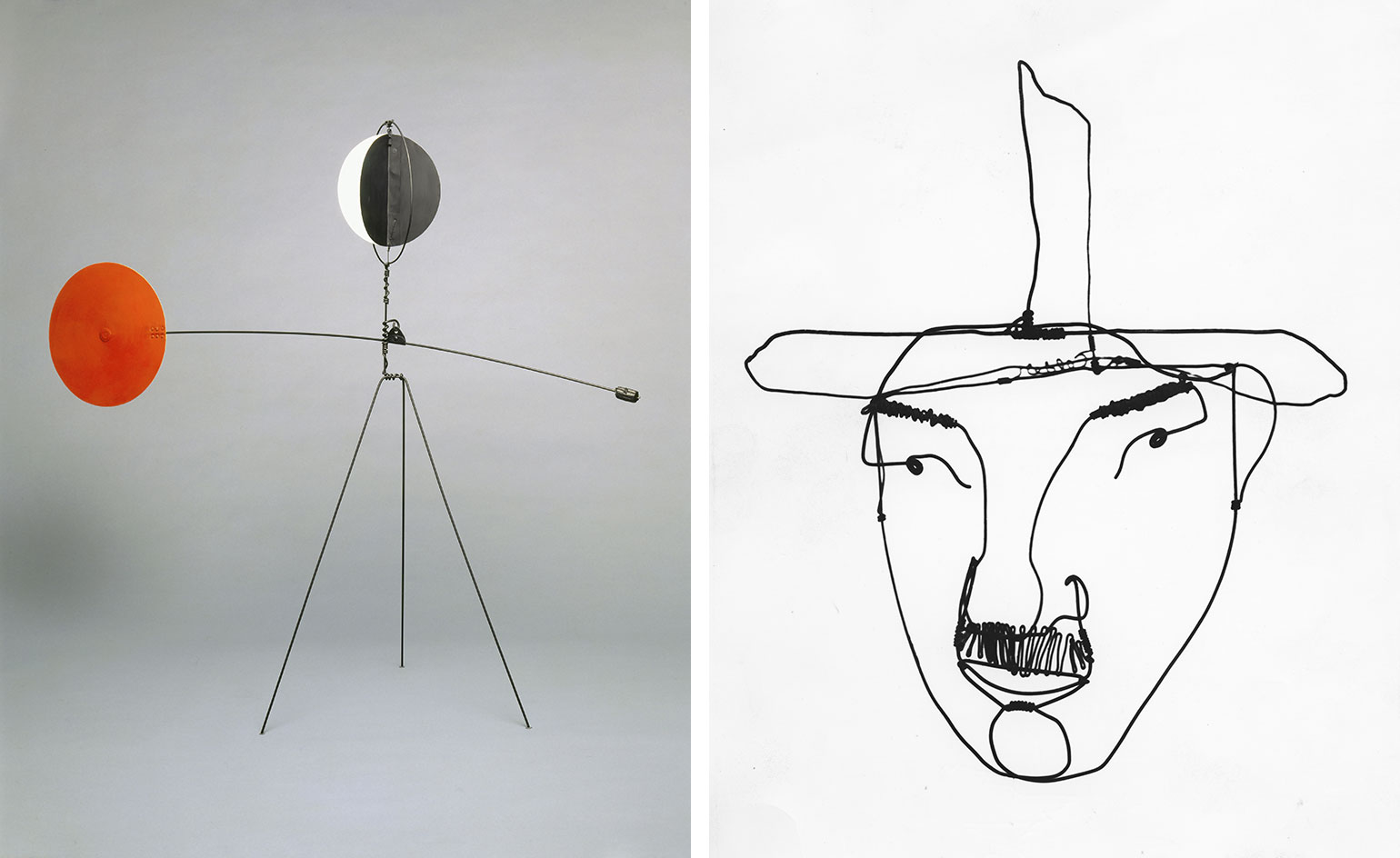
There is nothing difficult about a Calder. And, as happens, Calder’s reputation has suffered from this warm over familiarity. Pictured left: Red and Yellow Vane, 1934. Right: Fernand Léger, c.1930. Private collection
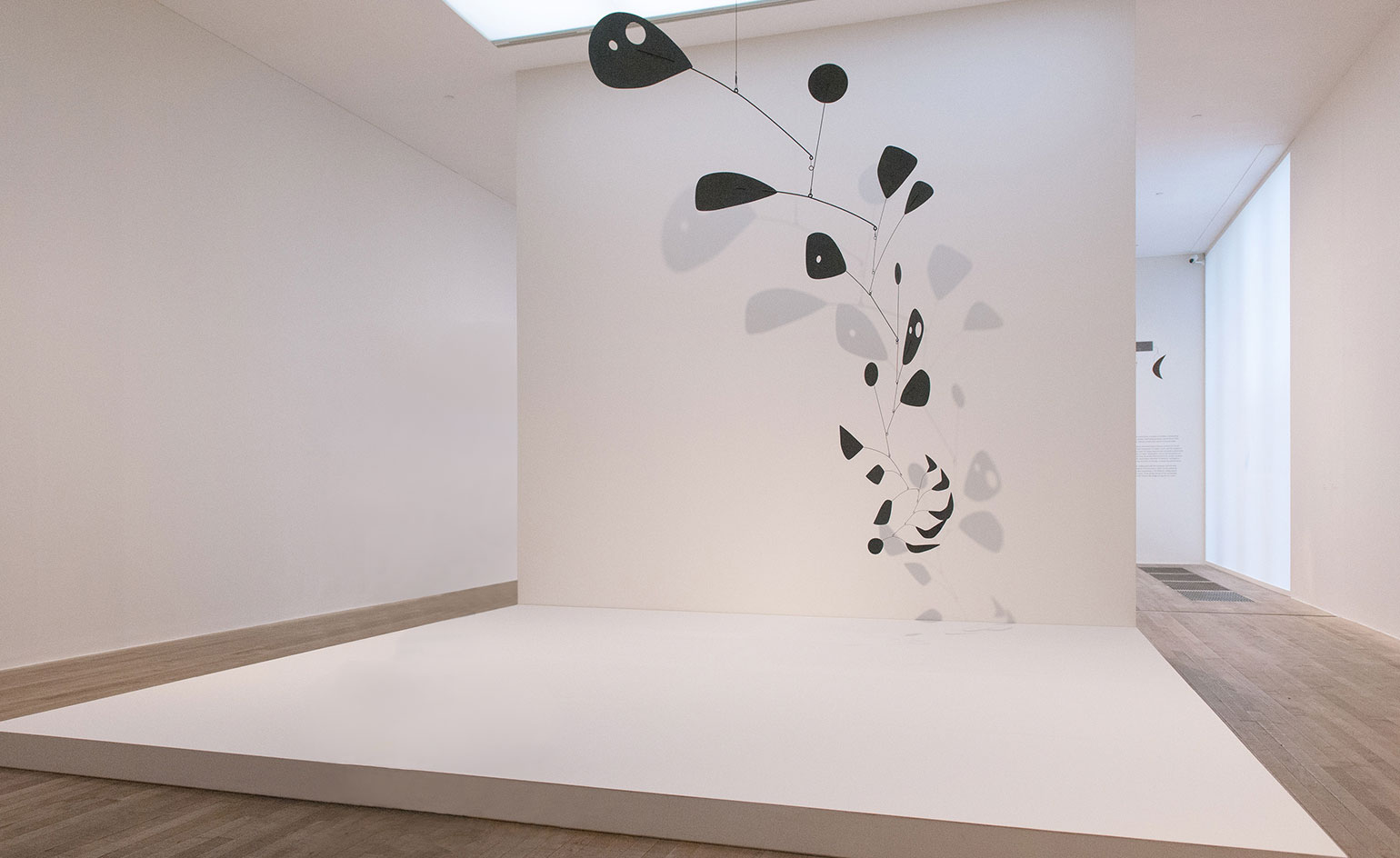
Installation shot of Black Widow, c.1948. Courtesy: Calder Foundation, New York / DACS, London
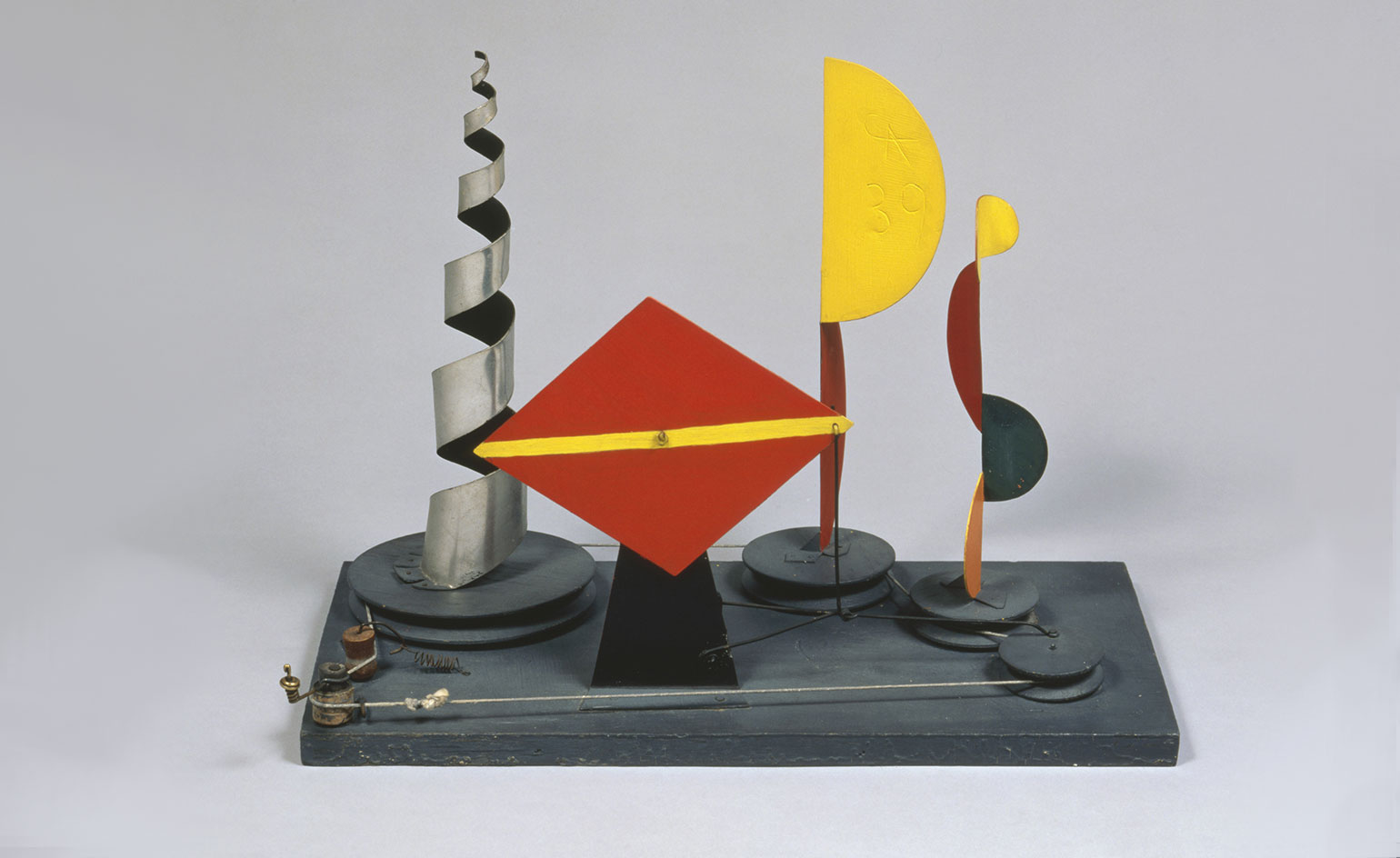
Untitled maquette for 1939 New York World’s Fair, 1938
INFORMATION
’Alexander Calder: Performing Sculpture’ is on view until 3 April 2016. For more information, visit Tate Modern’s website
ADDRESS
Tate Modern
Bankside
London, SE1 9TG
Receive our daily digest of inspiration, escapism and design stories from around the world direct to your inbox.
-
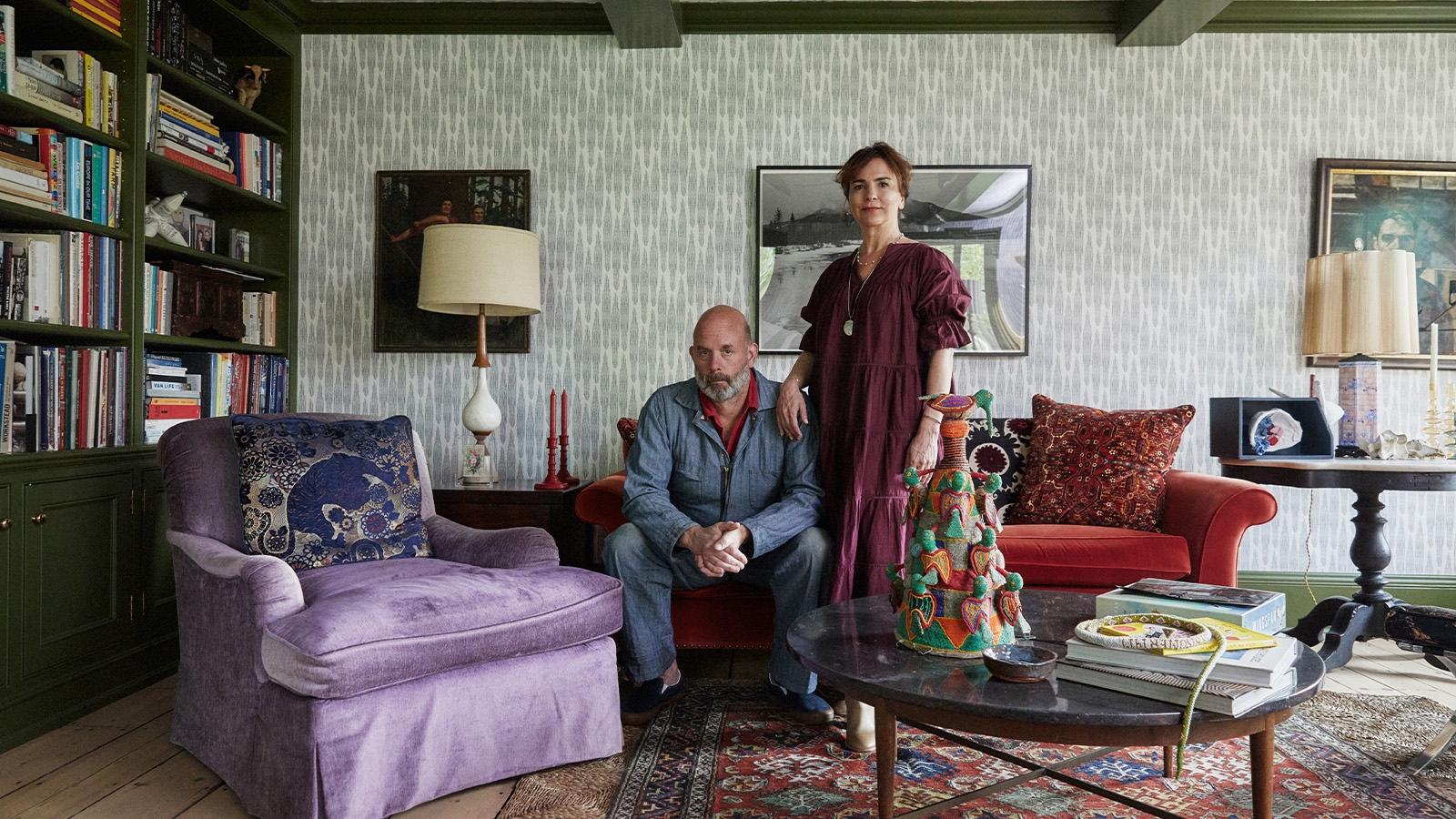 How We Host: Interior designer Heide Hendricks shows us how to throw the ultimate farmhouse fête
How We Host: Interior designer Heide Hendricks shows us how to throw the ultimate farmhouse fêteThe designer, one half of the American design firm Hendricks Churchill, delves into the art of entertaining – from pasta to playlists
-
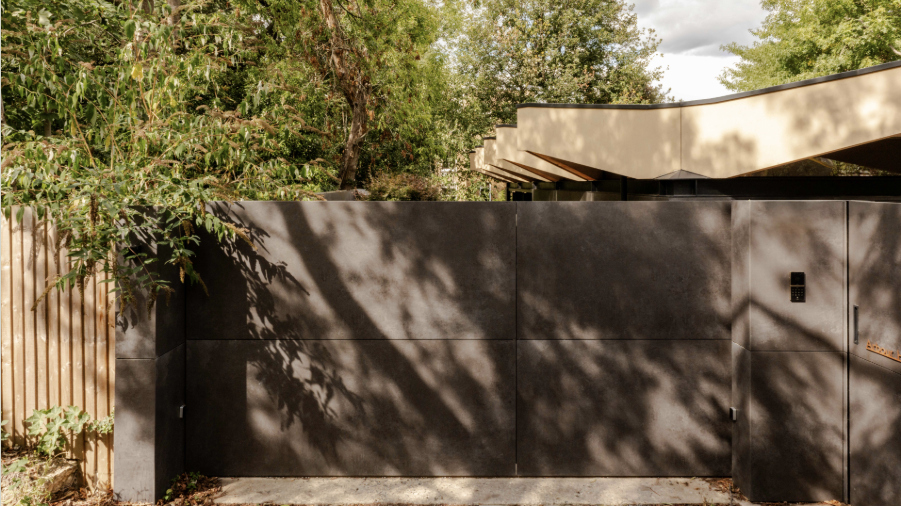 Arbour House is a north London home that lies low but punches high
Arbour House is a north London home that lies low but punches highArbour House by Andrei Saltykov is a low-lying Crouch End home with a striking roof structure that sets it apart
-
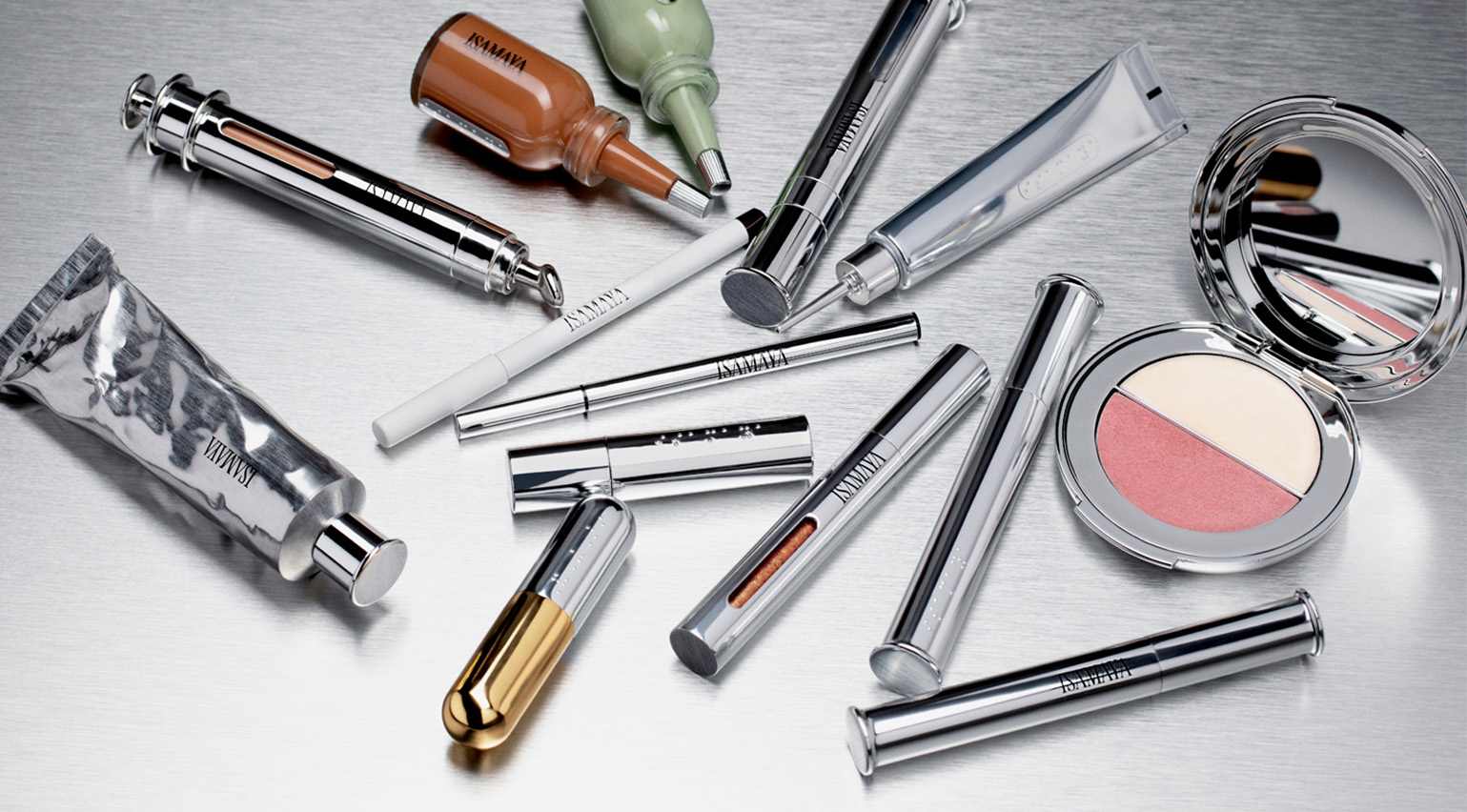 25 of the best beauty launches of 2025, from transformative skincare to offbeat scents
25 of the best beauty launches of 2025, from transformative skincare to offbeat scentsWallpaper* beauty editor Mary Cleary selects her beauty highlights of the year, spanning skincare, fragrance, hair and body care, make-up and wellness
-
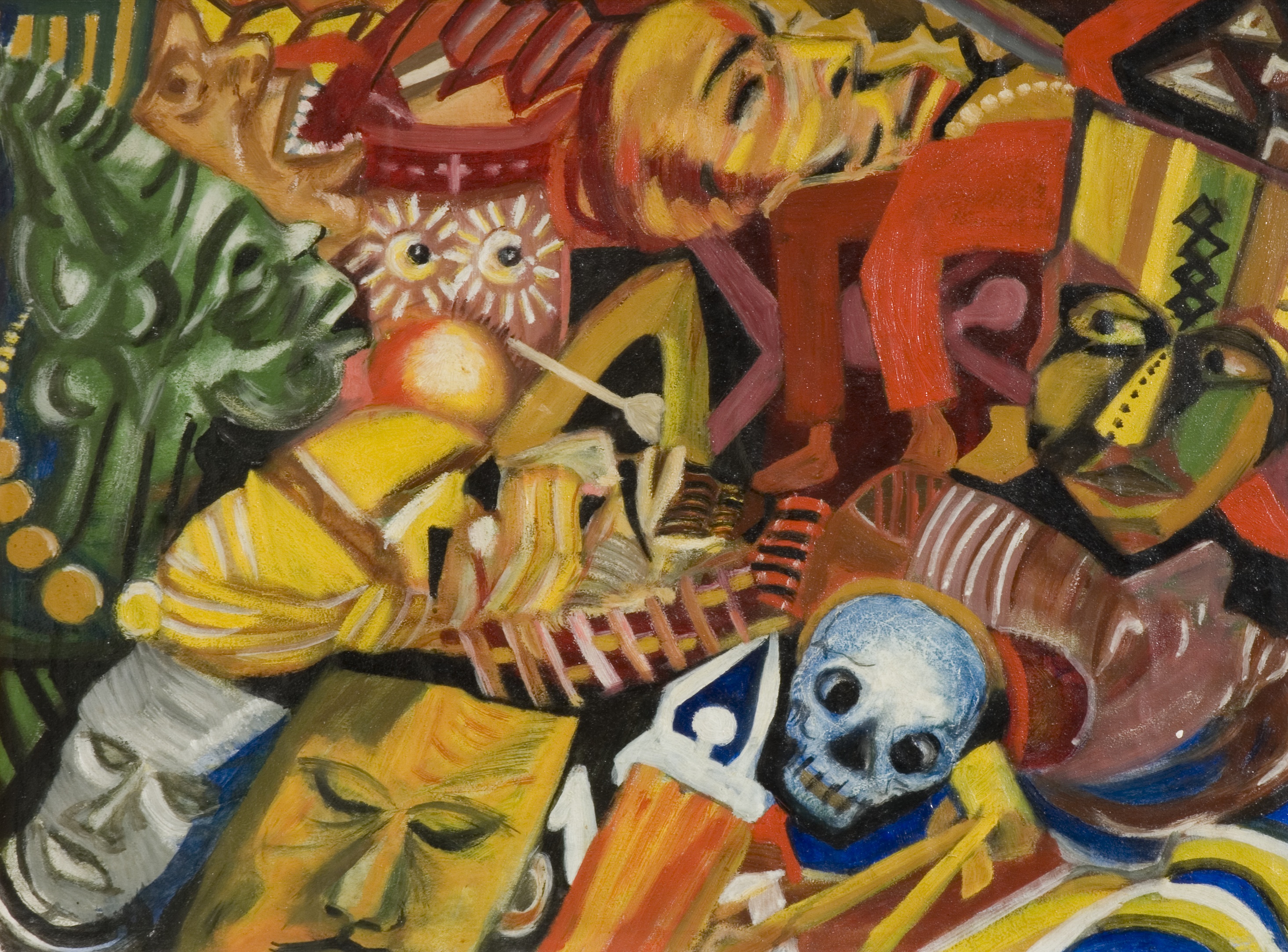 ‘Nigerian Modernism’ at Tate Modern: how a nation rewrote the rules of art
‘Nigerian Modernism’ at Tate Modern: how a nation rewrote the rules of artAt Tate Modern, ‘Nigerian Modernism’ redefines what we mean by modern art. Tracing a half-century of creative resistance, the landmark exhibition celebrates Nigeria’s artists as pioneers of form, freedom and cultural imagination.
-
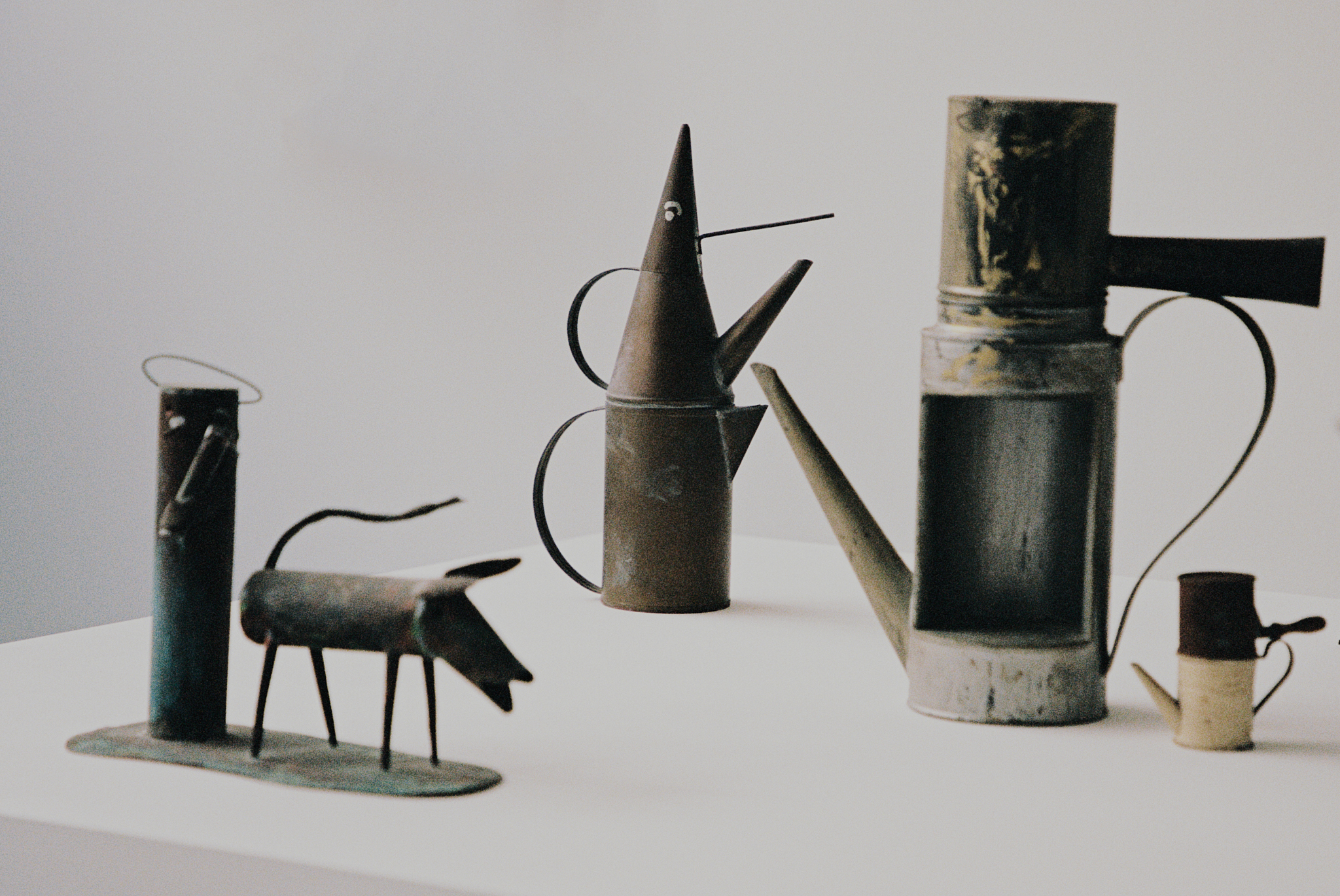 Riccardo Dalisi’s first UK retrospective opens at east London gallery Spazio Leone
Riccardo Dalisi’s first UK retrospective opens at east London gallery Spazio LeoneSpazio Leone draws together six decades of the Italian visionary’s work, from whimsical coffee pots to radical community workshops
-
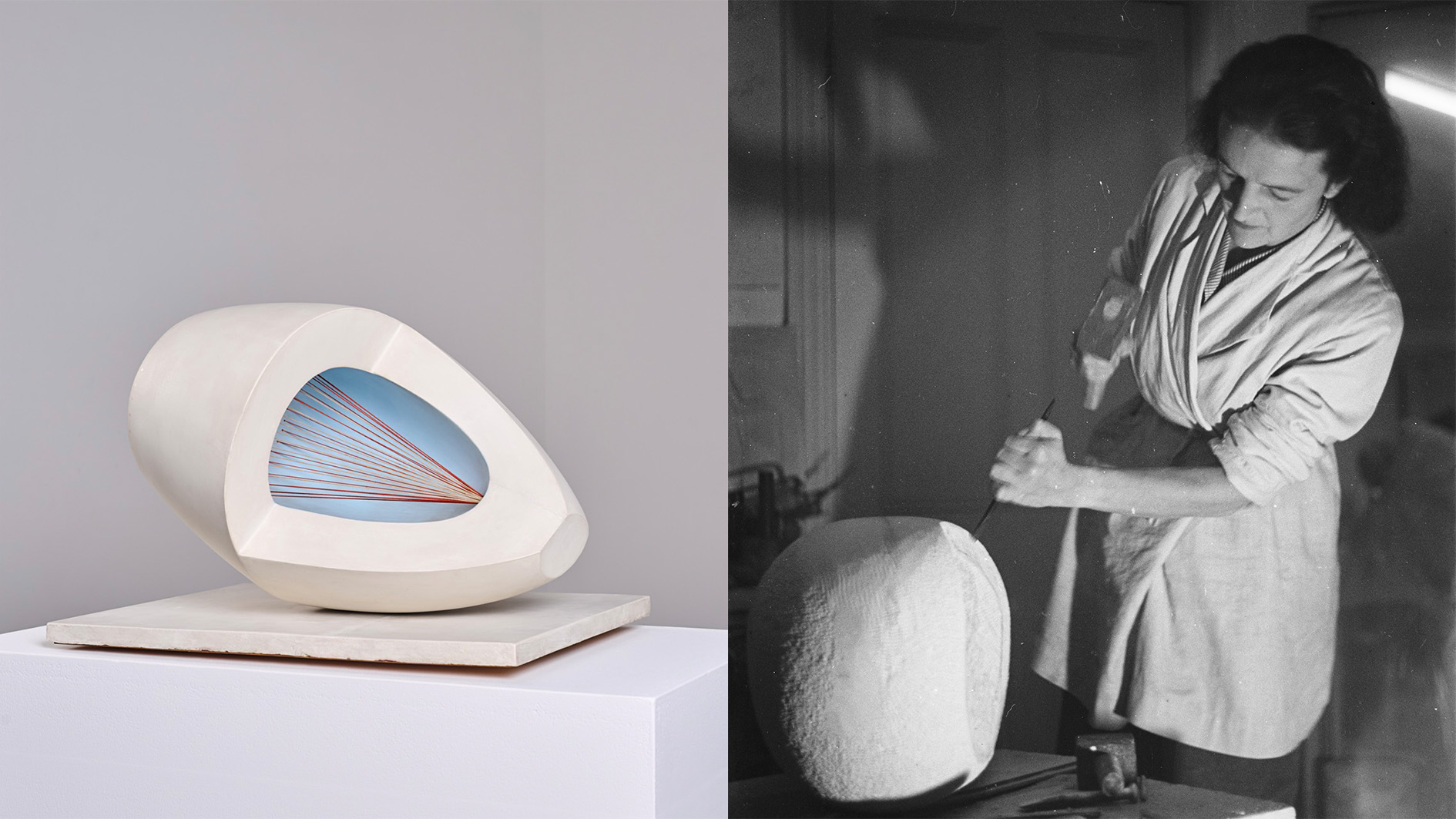 Inside the fight to keep an iconic Barbara Hepworth sculpture in the UK
Inside the fight to keep an iconic Barbara Hepworth sculpture in the UK‘Sculpture with Colour’ captures a pivotal moment in Hepworth’s career. When it was sold to an overseas buyer, UK institutions launched a campaign to keep it in the country
-
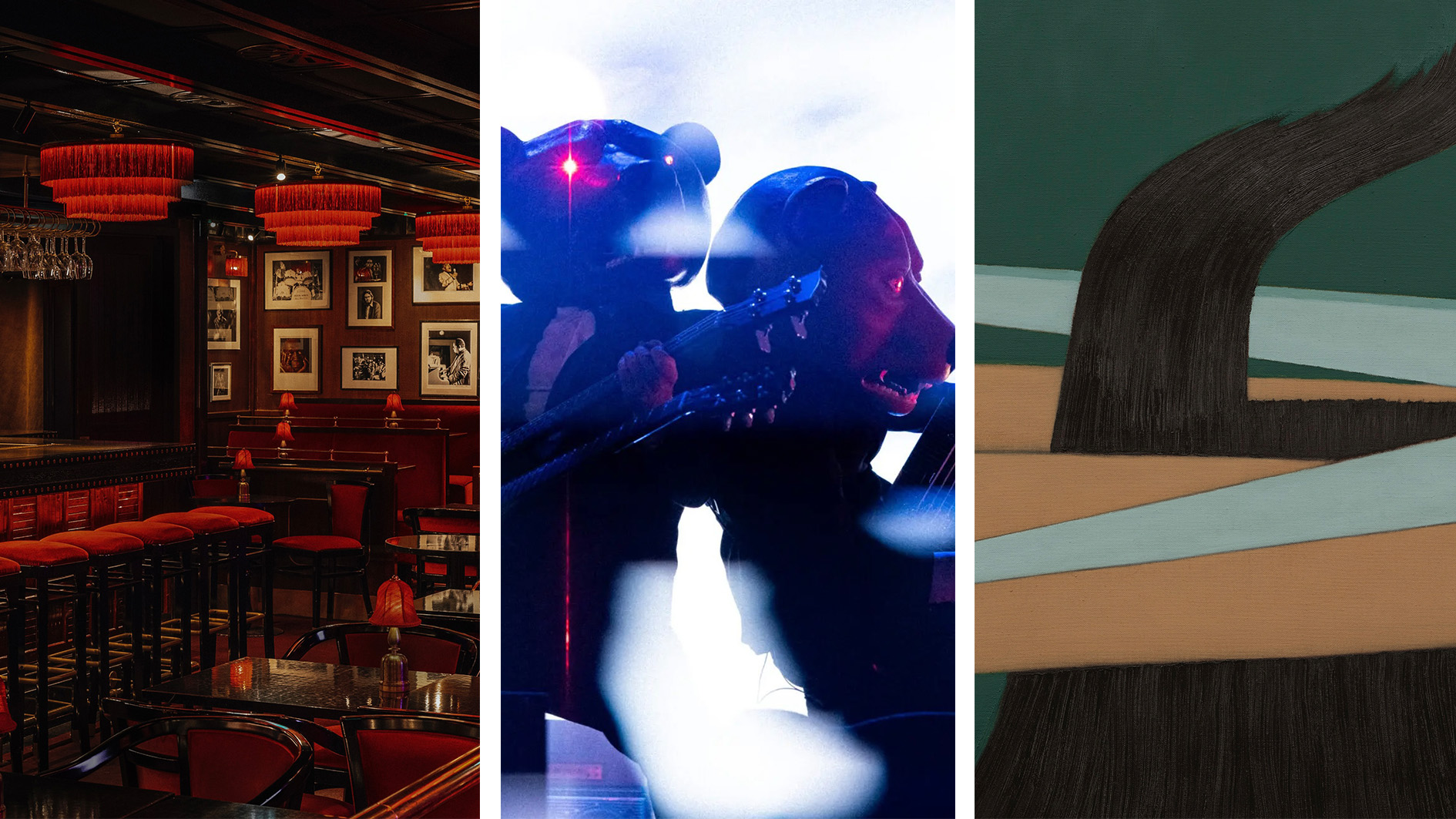 Out of office: the Wallpaper* editors’ picks of the week
Out of office: the Wallpaper* editors’ picks of the weekAnother week, another flurry of events, opening and excursions showcasing the best of culture and entertainment at home and abroad. Catch our editors at Scandi festivals, iconic jazz clubs, and running the length of Manhattan…
-
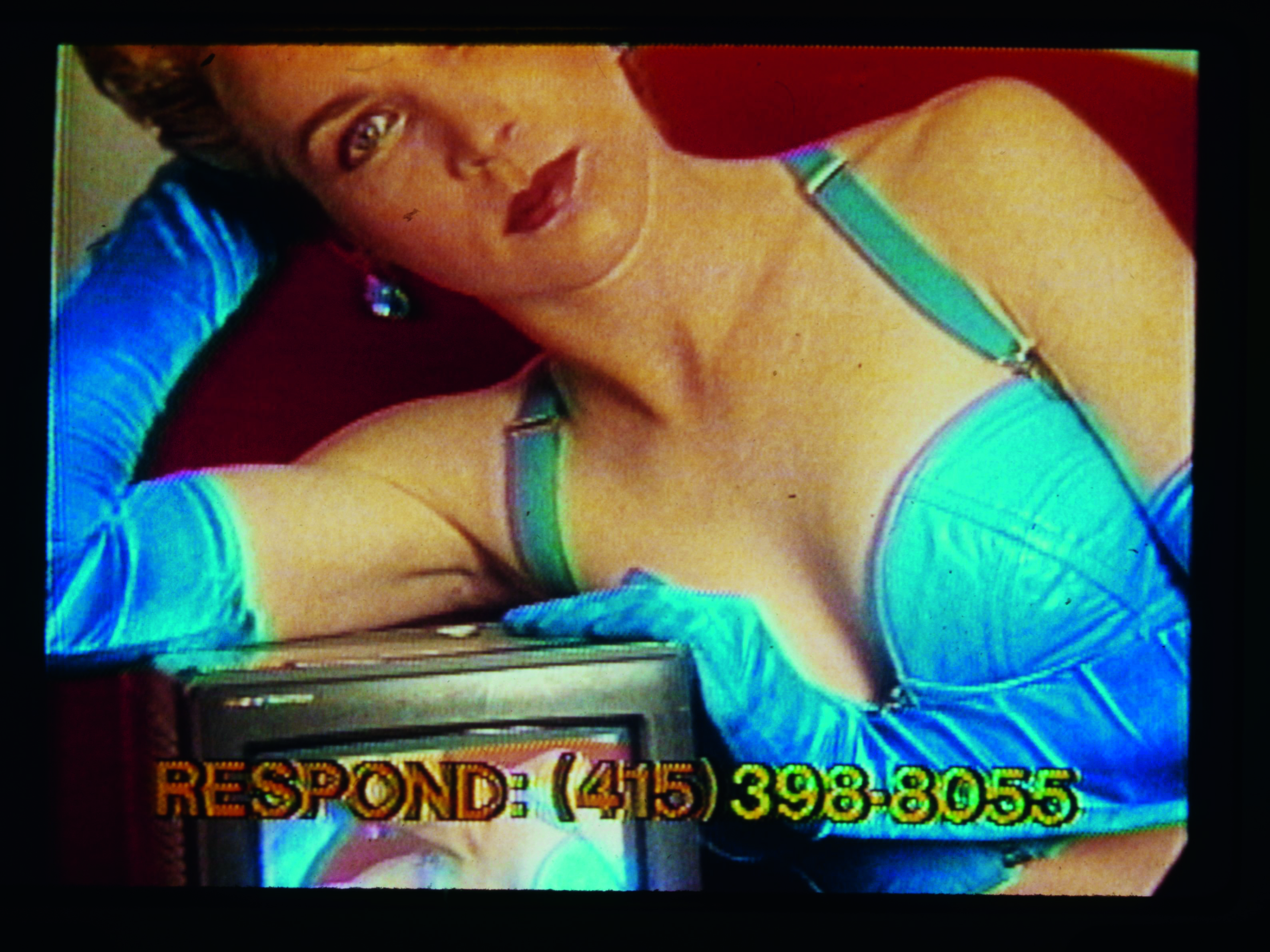 Thirty-five years after its creation, Lynn Hershman Leeson’s seminal video is as poignant as ever
Thirty-five years after its creation, Lynn Hershman Leeson’s seminal video is as poignant as everLynn Hershman Leeson’s 'Desire Inc', at 243 Luz in Margate, blurs the boundaries between art and reality
-
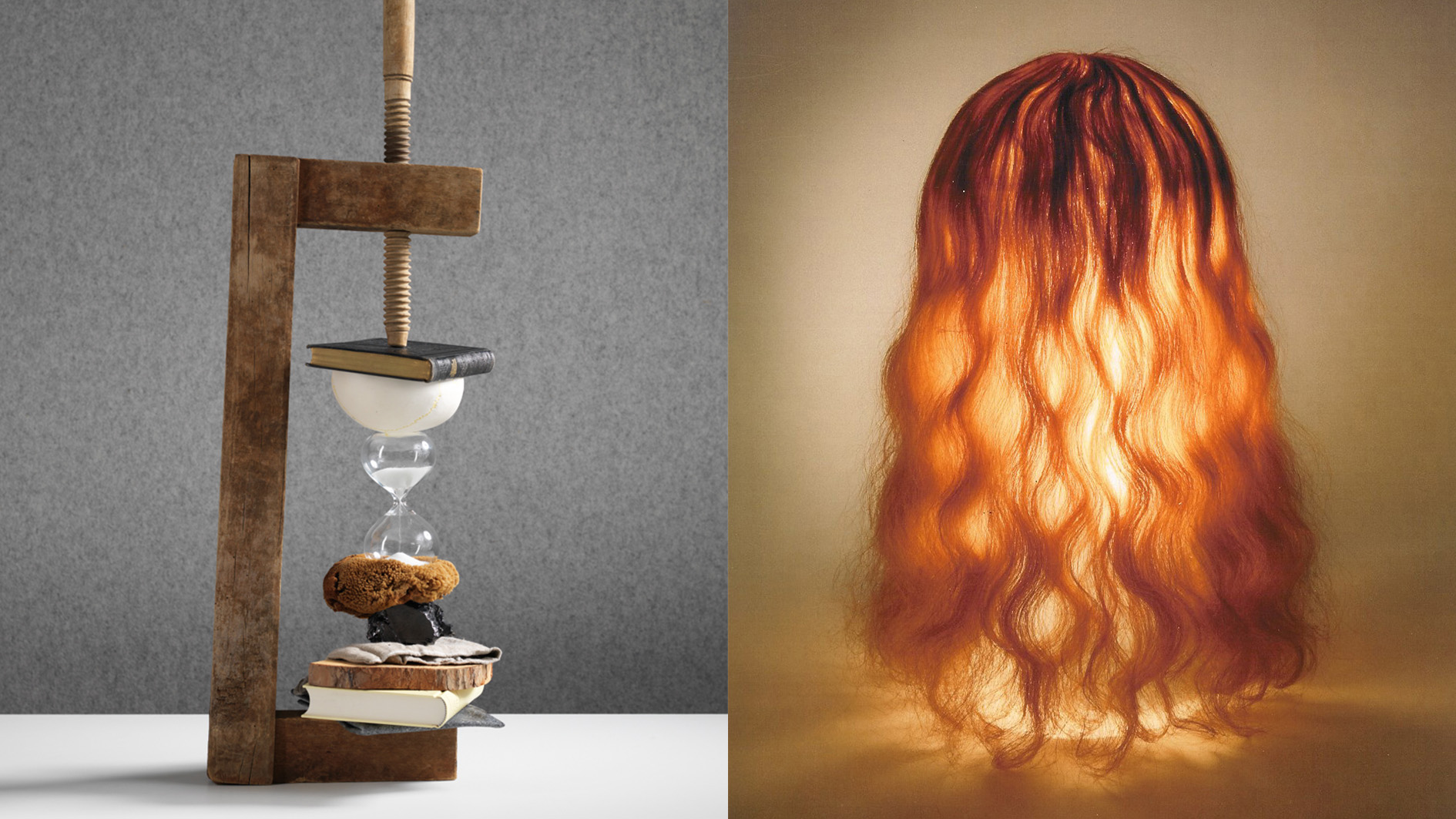 Rolf Sachs’ largest exhibition to date, ‘Be-rühren’, is a playful study of touch
Rolf Sachs’ largest exhibition to date, ‘Be-rühren’, is a playful study of touchA collection of over 150 of Rolf Sachs’ works speaks to his preoccupation with transforming everyday objects to create art that is sensory – both emotionally and physically
-
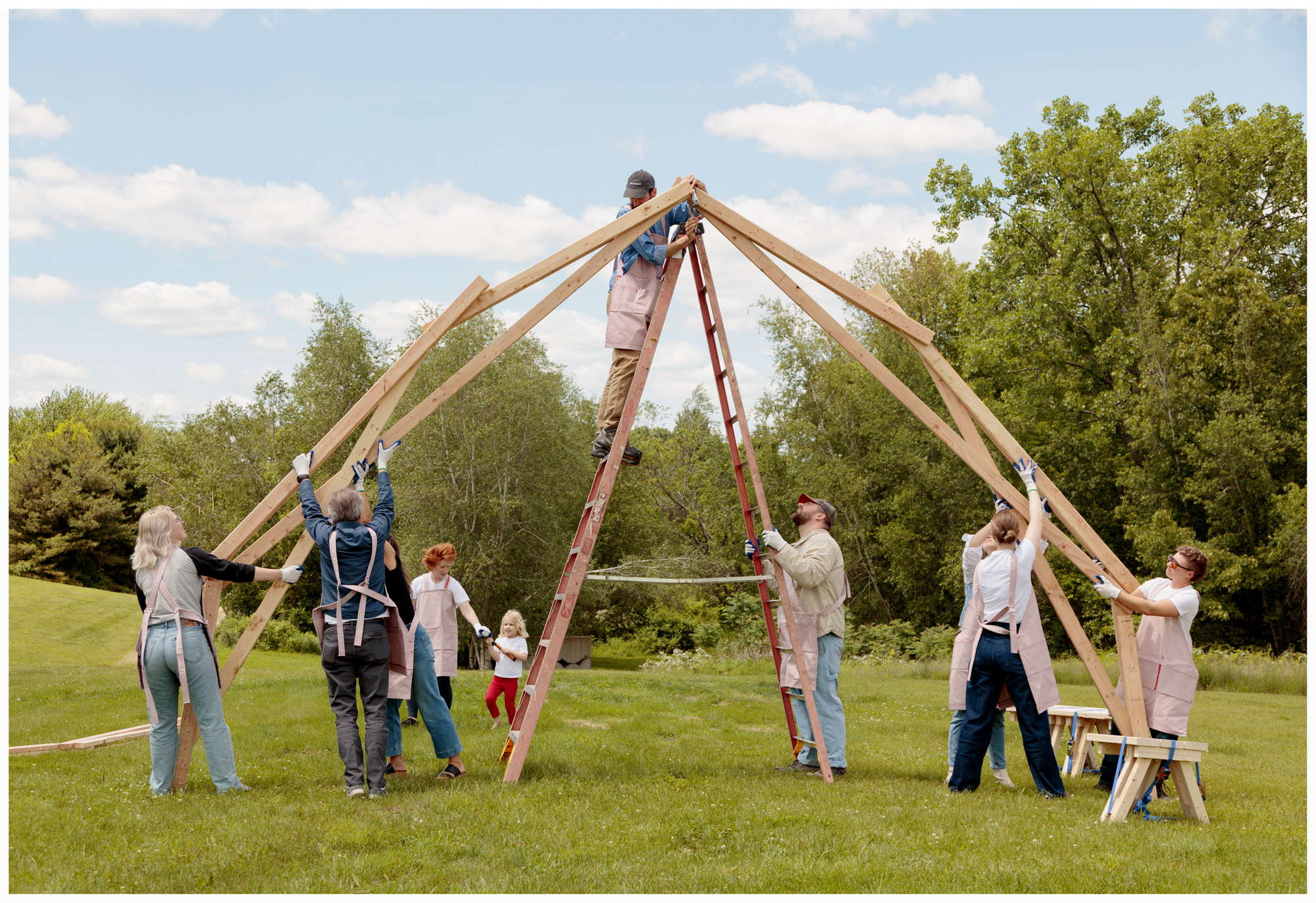 Architect Erin Besler is reframing the American tradition of barn raising
Architect Erin Besler is reframing the American tradition of barn raisingAt Art Omi sculpture and architecture park, NY, Besler turns barn raising into an inclusive project that challenges conventional notions of architecture
-
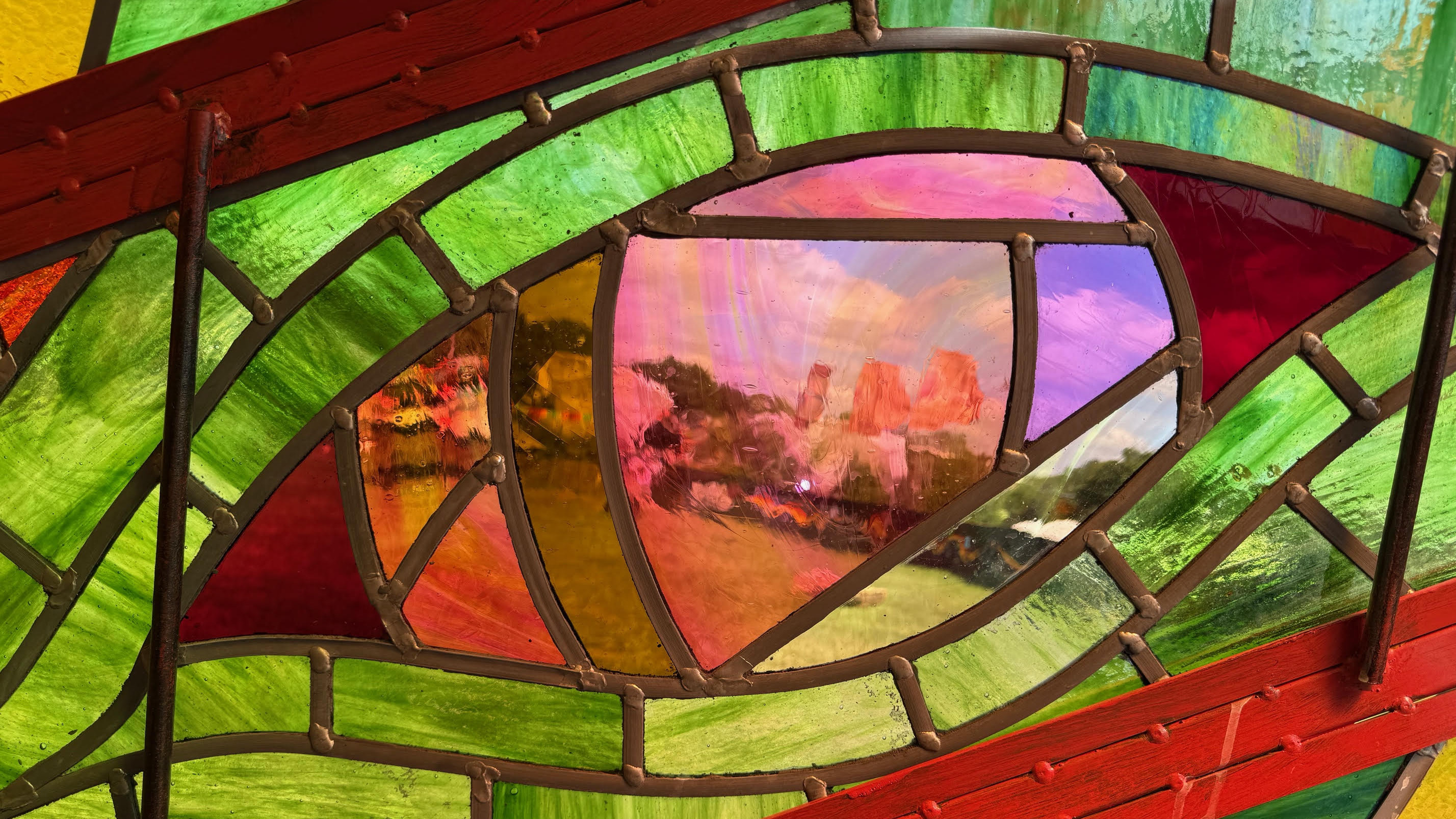 A bespoke 40m mixed-media dragon is the centrepiece of Glastonbury’s new chill-out area
A bespoke 40m mixed-media dragon is the centrepiece of Glastonbury’s new chill-out areaNew for 2025 is Dragon's Tail – a space to offer some calm within Glastonbury’s late-night area with artwork by Edgar Phillips at its heart